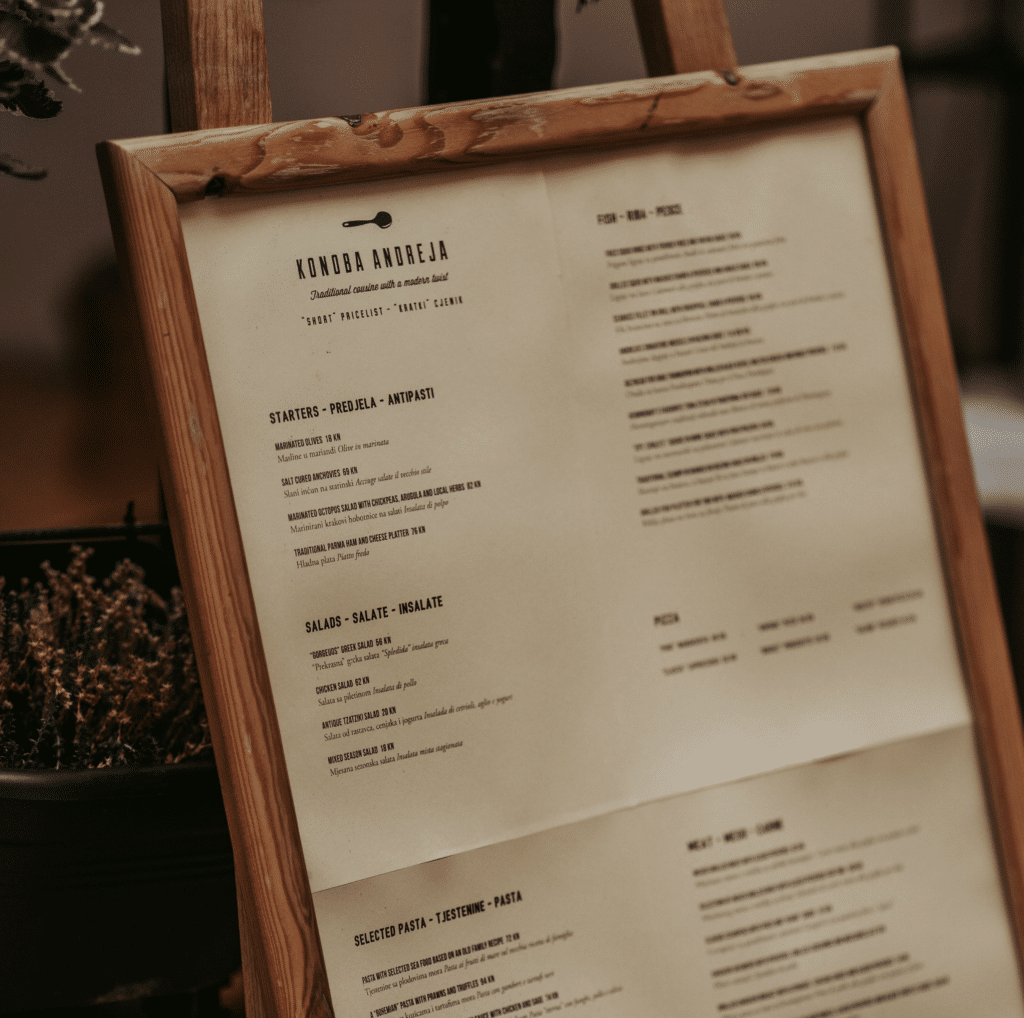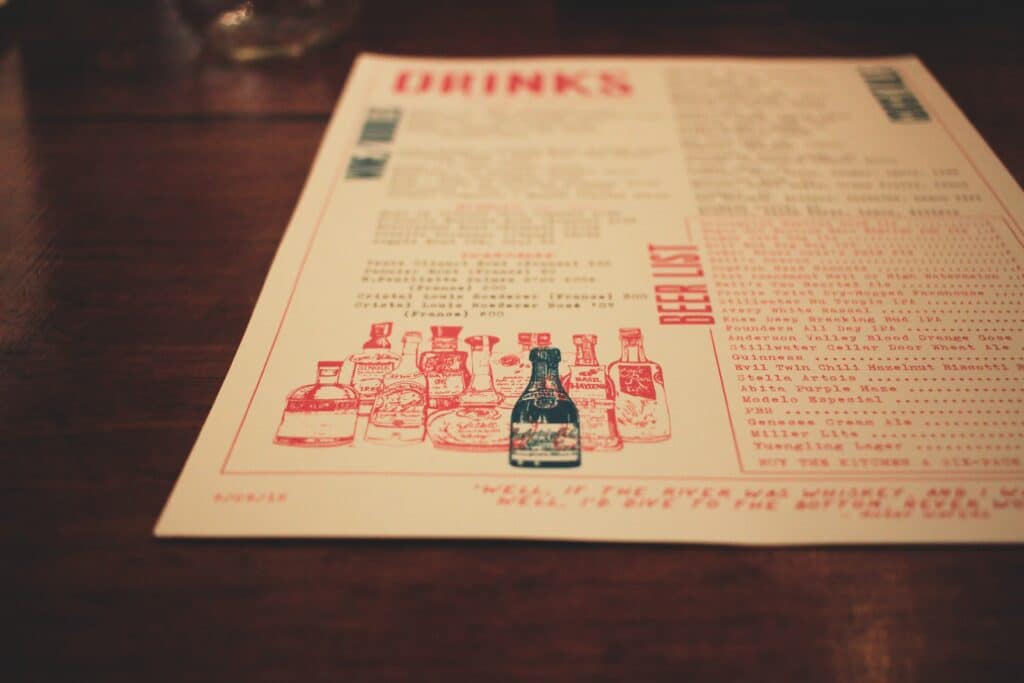By visiting our site, you agree to our privacy policy regarding cookies, tracking statistics, etc.
/
Your restaurant’s menu is more than dishes and prices. It serves as a fundamental part of your guest experience and stands as one of your business’s most important sales tool.
Your restaurant’s menu serves as a cornerstone of the guest experience and can effectively become one of your most crucial sales tools. When done properly, your menu goes far beyond highlighting your cuisine, specials and pricing. It communicates the restaurant’s quality standards, overall ambiance, and becomes a pivotal part of your dining experience.
Whether you’re creating a new menu from scratch, or making a seasonal update, here are some things to keep in mind when putting your words to paper (or screen).
When deciding on the size of your restaurant menu, it’s essential to strike a balance between offering a variety of dishes and keeping things manageable for your guests. While a vast menu may seem appealing, it can lead to longer decision-making times and potential dissatisfaction among diners. On the other hand, a very limited menu may deter customers seeking diverse options.
To optimize your menu size, consider categorizing your dishes, such as appetizers, entrees, desserts, and specials. This categorization helps organize the menu without overwhelming your guests. You can also have seasonal or rotating menus to introduce variety without bloating the primary menu.
White space is a fundamental design element in your menu that serves multiple purposes. It not only enhances the visual appeal but also improves menu readability. The absence of clutter and overcrowding allows guests to focus on the menu items and descriptions, and can even draw the customer’s eye to certain menu items.
White space can be used strategically to separate sections, highlight daily specials or chef’s recommendations, and make your menu items stand out. Additionally, it helps create a sense of elegance and sophistication, which can align with your restaurant’s brand and ambiance.

Incorporating visual cues in your menu design can be a powerful way to guide your guests’ attention and influence their choices. Use elements like boxes, colors, and illustrations to draw the eye to specific menu items. For example, you can use a shaded box to draw attention to daily specials, high-margin dishes, or house specialties.
Consider the layout of your menu, and strategically position high-profit items in prime locations where diners are more likely to look. This could be at the top left, top right, or center of the menu, as studies have suggested that these areas receive more attention.
The same concept can be applied to color schemes, as colors evoke different emotions. Does your restaurant have a lot of spice? Consider using a red or yellow. Do you specialize in local or farm-to-table ingredients? Green can evoke thoughts of nature and freshness.

Research has shown that the presence of dollar signs next to prices can have a negative psychological impact on customers, making them more price-conscious. To create a more inviting and less price-focused menu, consider omitting dollar signs and simply listing the prices.
Furthermore, arrange prices in a way that discourages direct price comparisons between menu items. You can place prices to the right of menu items rather than in a single column. This can lead to increased spending as guests focus more on the item’s description and less on its price.
Offering a well-curated menu is essential for enhancing the dining experience. While variety is important, an excessively long menu can overwhelm diners and slow down table turn times. Instead, focus on offering a thoughtfully selected range of dishes that reflect your restaurant’s concept and appeal to your target audience.
Diversify your menu by featuring unique and signature items that make your restaurant stand out. Additionally, consider the seasonality of ingredients and update your menu accordingly to keep it fresh and aligned with your restaurant’s concept.
A well-curated menu is even more crucial when uploading to third-party delivery apps. While patrons in your restaurant don’t have the option of picking a competitor, online users have hundreds of options a click away. If your menu is long and overwhelming, making options difficult to find, users are likely to pick another option.
Engaging menu item descriptions can stimulate the senses and create anticipation for the meal. Use language to describe the flavor, spice, or texture of your dishes or the dining experience you’re trying to evoke. Make sure your descriptions align with your brand. A fine dining restaurant may use fanciful descriptions of ingredients, while quick-service restaurants may highlight the size and value of their meals.
Beyond the flavor, share the story behind each dish, such as its inspiration, sourcing of ingredients, and the effort put into its preparation. This not only adds depth to the dining experience but also highlights the care and authenticity of your restaurant.
Menu engineering is a strategic approach that combines data analysis and creative design to enhance restaurant profitability by optimizing menu item placement and pricing. It involves several key components like identifying recipe costs, popularity, and yield in order to understand how different menu items contribute to your restaurant margins.
Menu engineering is a data-driven approach, but you don’t need to be a data person to benefit from it. It enables restaurant owners to make informed decisions about menu item placement, pricing, and promotions to maximize profitability. It is especially useful in the highly competitive restaurant industry, where small adjustments to the menu can result in significant revenue increases. For more information, check out our comprehensive series on Menu Engineering to get the most out of your entire menu and maximize your profits.
Remember that your menu design should align with your restaurant’s brand and concept, maintaining consistency across all platforms, including physical menus and online menus on your website and ordering system. Make your menu user-friendly for all guests, considering their visual and physical needs, and ensure it complements your restaurant’s personality and style. Regularly review and update your menu to keep it fresh and appealing to customers.
Join our community of amazing individuals and start shaping the future of the restaurant industry with us.
See why more than 40,000 restaurants use Restaurant365
500 Technology Drive, Suite 200
Irvine, CA 92618
Westech 360
8911 N Capital of Texas Hwy
Building 1, Suite 1200
Austin, TX 78759
Restaurant365 bridges the gap between accounting and operations by centralizing all data, helping restaurant operators to become more efficient, accurately forecast, and tackle any challenge or opportunity with speed and accuracy.